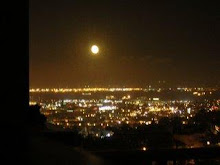The Rincon Center Post Office Annex houses a collection of publicly funded murals,
painted by Anton Refregier during 1947 – 1948. Although the murals are collectively entitled "The History of California," the collection also includes murals related to WWII.
In 1953, Congress determined that the murals were Communist propaganda (too much red paint and several murals focused on – God forbid - labor issues) and were also disrespectful to the pioneers of California (some murals depict the tragic side of California’s conquest and development – i.e., the subjugation of indigenous Californians and the exploitation of Chinese labor – heavens forbid the “other” side of the story be told).
But the murals were defended as historically accurate works of art and survived. Nonetheless, Refregier did make some revisions to pacify the detractors. In one mural depicting the Mission days of California, a Catholic friar had a very ample belly, in stark contrast to the emaciated indigenous people in the same scene. Refreiger put the friar on a diet, and in short order, the obese fellow trimmed down a bit. Other adjustments were made as well – some of the Commie red was toned down (perhaps some of the shades of pink in the murals merely reflect fellow travelers, not true Communists).
Approximately 35 years later, the murals saved the art deco post office from total destruction. The property was to be razed and then redeveloped, but San Franciscans, an outspoken lot, set up a hue and a cry and the developer incorporated the murals into the new project.
That these murals, despite or even because of their controversy, should be treasured seems obvious to me. They tell a variety of stories – not just of the scenes depicted, but of the work’s relationship with the public and politics, and with the building that provides them a home.
VIGILANTES
THE EARTHQUAKE
STRIKE
BUILDING THE GOLDEN GATE BRIDGE
WAR
THE FOUR FREEDOMS
I finally visited the Annex just the other day. In part to see the murals, but also to watch the performance of an aerial site-specific dance commemorating the funeral march for two workers killed in San Francisco's Pacific Maritime Strike of 1934 (aka, Bloody Thursday), which in turn lead to the San Francisco General Strike. The dance was performed on one of the ledges of the Post Office Annex, which is located where the funeral march began. The dance, Sympathetic, sponsored by the Labor Archives and Research Center, was one of many free, public events offered this month by LaborFest to honor the 1934 San Francisco General Strike. With labor under attack across the country, with public employees finding themselves vilified and disenfranchised, we need to draw courage from those who came before us and had far more on the line than we do now, but still risked it all for a better future – for themselves and those who came after.
The funeral march was a silent march. Men marched down the street, dressed in black, their hats in their hands out of respect for the dead. Although Beethoven’s 12th played periodically as the men marched, it was by and large a silent procession, impressive for its starkness and solemnity. The march gained the workers quite a bit of sympathy and certainly helped them gather their strength and unity for a general strike. The dance captures the essence of that march. Alas, I fear my photos do not do the dance justice.
Monday, July 11, 2011
Subscribe to:
Posts (Atom)

















